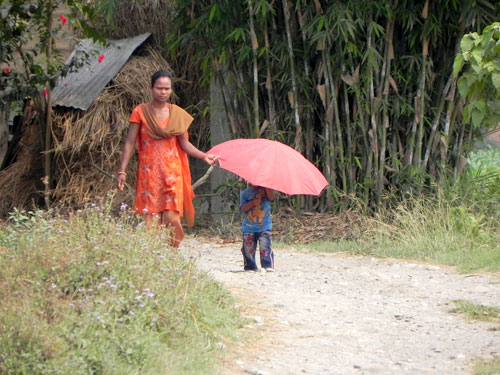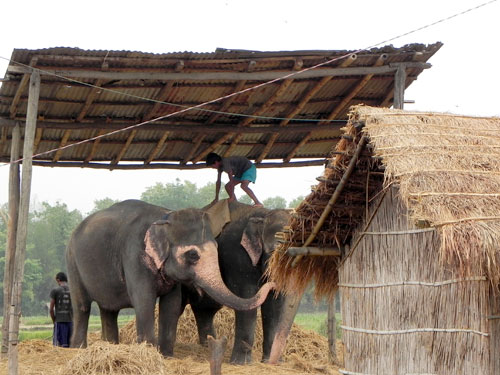April 18
The town of Sauraha borders on Chitwan National Park and is a world away from Kathmandu. What an inspiring place. Exotic bird vocalizations fill what otherwise would be a serene silence. Every manner of chirp, caw, twitter and call creates an exhilarating backdrop for this pleasant forest atmosphere.
The people and the local dogs are refreshingly friendly! The traditional namaste greeting, hands clasped together at chest level accompanied by a polite head bow, encourages interaction, bridging an otherwise seemingly insurmountable gap caused by the language barrier. But with this bow and respectful greeting, cultures merge and friendships are born. For the veteran members of the ECI team, friendships with the locals are rekindled and strengthened; everyone is extremely happy to see the foreign vet team back in Sauraha.
The short walk from our lodging into town is rich with color and contrast. Beautifully clad women, parasol in hand, gracefully walking down dirt roads flanked by tethered buffalo, foraging goats, a scattering of chickens and elephants. It is surreal; in less than a half-mile stretch of road, nine elephant stables dot the landscape. These elephants, used for tourist safaris, appear no more out of place here than the family dog in the backyards of suburban America.
Today was a day for silent observation as each turn in the rugged road brought another stable and tethered elephant into view. In their mini-environments, elephants stand under a covered stable with a water source to one side, the mahouts residence directly in front and a trough for disposing dung directly behind. Under foot is an ample supply of fresh-cut “elephant grass.” The elephants appeared calm and relatively uninterested in passers-by, even though most are only a few feet off of the road. Once I get over the culture shock of seeing elephants literally around every corner I will concentrate on getting to know each elephant and their history, and of course I will share that information with you.


